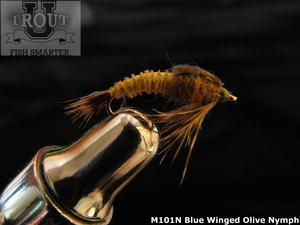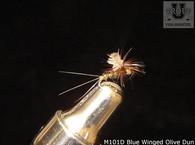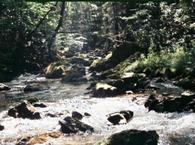
After mayfly eggs are laid, they hatch within usually 2 or 3 weeks and start the next cycle as nymphs. The nymphs are covered by hard exoskeletons and are the underwater stages of the mayfly’s life cycle. They can live in the nymph stage for as long as 3 months and even up to a year in some species, during which time they are growing. As they get larger, they grow a new exoskeleton underneath the old and shed the old smaller exoskeleton which has become too small to house them. This process is called a molt or instar.
There are four basic types of mayfly nymphs - the burrowers, swimmers, clingers and crawlers. Each type has their own particular habitat and behavior. To imitate these nymphs with a fly pattern, you must first determine which type of nymph it is. Not only is it important to know what fly to use, but you need to know where and how to present it. We will discuss the different types of mayfly nymphs in our blogs starting with the swimmers.
The Baetidae family are swimmers and they include the Blue Winged Olives, Gray Drake, Slate Drake, Callibaetis, and Brown Duns. They are named swimmers because they swim very fast and dart to and fro in the water. The nymphs of the swimmer mayflies are all slim streamlined and shaped round like a minnow so they can swim easily. Their tails are fringed with fine hair and are used to propel them through the water. They have oval gills positioned on the side of the abdomen and their legs are weak and wobble easily.
They hide wherever they can find cover which is usually under the rocks, pebbles or grass on the bed of streams. They prefer the slower moving moderate water that borders fast while avoiding the faster water when possible. The Blue Winged Olives can best be imitated with a hook size ranging from 14 to 22 with the most common being a 16. For the Slate Drakes, Gray Drakes, Callibaetis, and Brown Duns use a hook size 14 or larger. These larger nymphs are excellent swimmers and behave even more like small minnows as they dart around in the water near the bottom of the stream using sudden bursts of speed.
The fly imitating the swimming nymph can be weighted to fish on or near the bottom, or without weight to fish in the surface skim. It can be fished in a dead drift but it is often more effective when presented with some action to mimic swimming. This can be imparted either by twitching the tip of the fly rod or by small short twitches made by line hand.
Learn more about mayflies and their life cycles in Class 301 "Introduction to Mayflies" and more about nymping can be found in Class 303 "Top Nymping Tactics". Both of these short free classes can be found in TroutProStore.com Graduate Level Classes. We will blog more about the other types of mayfly nymphs so stay tuned.





